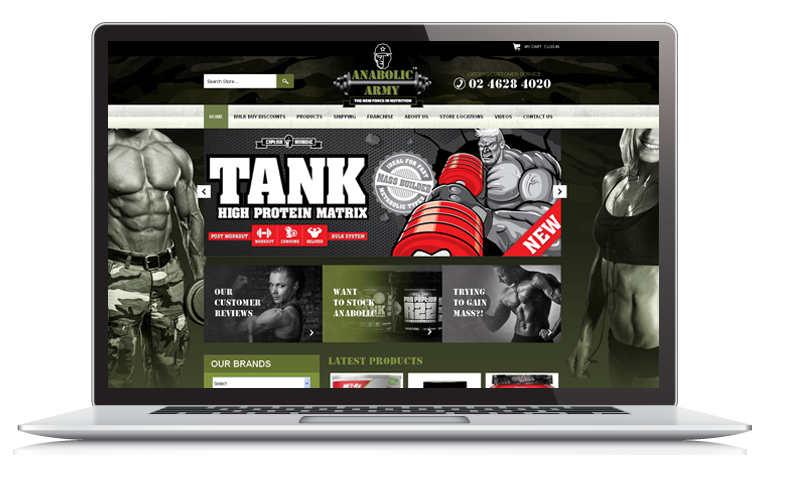
Founder of A Website That Works For You, Tim Williams contributes in "Getting Business Online, September 2011 issue".
Why is Search Engine Optimisation important and how does it play a role in your overall marketing mix? What does it take to establish and maintain high search engine rankings and what does it mean for you at the end of your funnel? Find out in this interview.
Why is SEO so important in the modern business environment?
Search Engine Optimisation and gaining high rankings for your website (that you have tested and already know work) are a crucial piece of the puzzle for your business because:
- High rankings for proven search terms will completely transform the quantity of leads or sales that will come through an effectively developed website.
- High rankings for proven search terms will turn into leads or sales at a higher rate then other types of traffic such as pay-per-click advertising or directory listings.
- Once you get to the “maintenance” stage it can deliver an amazing return on investment. The cost-per-lead or cost-per-sale of products through organic search engine rankings will be very low compared to traditional forms of advertising such as newspaper or radio etc.
What are the key elements business owners should focus on when designing an SEO-optimised website?
Before implementing an SEO strategy, you must test and track search terms you think are suitable.
Pay-Per-Click advertising is a great way to get almost instant rankings for the search terms. This allows you to see what people searching for these search terms specifically do when they arrive at your website.
Did they purchase a product? Did they enter their details for a quote or further information on your product or service? Google Analytics (and Google Adwords, Google’s pay-per-click program) allow you to track exactly which search terms resulted in which sales or enquiries.
With this information you can identify whether or not that particular search term is worth targeting in your SEO strategy.
You need to track and test what works so you know what value each of the search terms will bring to your business.
How should a business go about selecting the best keywords on which to focus their content?
Your initial term list.
You need to start with building a list of possible search terms a person may search that is looking to buy your product or service.
The more general the terms are; the less effective they will be. For example: If you only sell blue cars, the search term “cars” would be very general compared to the term “buy blue car” or “blue car for sale”.
So you must be specific in your initial list.
There is no specific number of search phrases you should come up with, but you can use Google Keywords Tool to help with suggestions.
Once you have come up with as many possible and most importantly specific/relevant search terms you can then do some research to find out weather or not it is worth targeting these terms in your SEO strategy.
Researching your list.
There are various tools available to be used free of charge:
Google Keyword Tool will give you a rough indication of how many people are searching for the specific term on a global and national level.
Google Trends will allow you to determine weather or not it is likely that more or less people will be searching this specific term in the future.
Google Insights is used to further investigate search trends of specific terms allowing you to breakdown this data based on Country & State. It also provides you with suggestions of related search terms that are becoming more popular in the future. Google Insights generally makes Google Trends redundant as it offers the same basic functionality plus more advanced functions
So how do you use these tools and what are the criteria for selecting your keyword list?
Firstly you’ll need to determine weather or not there are enough people searching for each specific term to bother investing any time in it.
To do so, paste your keyword list into Google Keyword Tool and you’ll see the “Local Monthly Searches” column. While terms with a small amount of searches and hardly any competing websites do add up and can result in a large number of overall traffic – a lot of the terms in your list will be receiving less then 20 searches/month which can be of very little value to you
The terms that will be the easiest to achieve top rankings for and deliver the highest result are those that have a low number of competing websites with a reasonable or high search volume.
A formula exists to help you determine these terms which is called “K.E.I.” i.e. Keyword Effectiveness Index. Without getting into the detail of this complex formula, you can use Google Keywords Tool to get a general indication. Look at the term’s competition Vs search volume and by sticking with terms that have over 100 searches/month and less then 75% of the green competition bar filled you’ll know that it will be reasonably easy to gain high rankings for these terms and they will be of value to you.
The higher the search volume while maintaining lower then 75% competition, the more you will get out of the search term.
Testing your list.
Now it’s time to test your search terms in a pay-per-click program such as Google Adwords as mentioned previously, and only then can you finalise your list. Once you’ve done this, you’ll end up with a list of search terms that you know generate leads or sales and now you can start targeting those organic listings in search engines.
What are the best ways for a business to increase its inbound links?
Article distribution is by far the one of the best ways to receive highly targeted inbound links. There are thousands of quality article distribution websites out there that allow do-follow links with keyword rich anchor text. Article distribution is the process of creating content and posting it on third party websites. What you must do for this to work for you:
- Creating good quality content
- Use the actual keyword you are targeting in the link anchor text (the part you click on).
- Make sure you select article distribution websites with a high pagerank and minimal outgoing links so your website receives as much “PR Juice” as possible which will help you seem like more of an authority to search engines and lift your rankings for that particular term.
How important is it for a business website to be updated with fresh content regularly?
It is much easier to increase the pagerank of a website that has lots of good quality keyword rich content that has been contributed on a very regular basis for a long period of time. Internal linking is also very important though.
What are the benefits of including AdWords in an SEO strategy?
Without testing your keywords in a pay-per-click program such as Google Adwords, you’re sailing blindly at the start. You’ll be investing time and money to gain search engine rankings and you don’t want to arrive in a top position after 6 months only to find that the people that search that specific search term don’t actually convert into sales or enquiries effectively.
What are the biggest "no-no's" when it come to SEO?
“Black-Hat” refers to anything SEO that is going to potentially harm your rankings. Search engines can penalize you for doing certain things because it is blatantly clear you are trying to manipulate rankings.
Effective search engine optimisation looks natural, so don’t do the following:
- Keyword Stuffing – This is referring to putting duplicate keywords in your meta tags or content where they do not make sense and you have very little supporting content.
- Bulk Link Purchasing/Building – If you were to go out and establish 1000 inbound links in a matter of a couple of hours, or through link building software, it will become obvious to search engines that they were not naturally built. Inbound links must be obtained over a randomly even period of time so it looks as if more and more people are interested in your content and posting links.
- Invisible/Hidden Text – This is where you put multiple keywords on a website in hope of attracting visitors that are the same colour as the background so they appear invisible to the viewer but readable by search engines. This doesn’t work and you run the risk of being panelised.
- Link Farming – A link farm is a group of websites that all link to other websites in that group. Generally link farms will request a reciprocal link and while this is generally acceptable on relevant websites as there is a purpose, but two websites that have nothing to do with one another sharing reciprocal links do not look natural and can get your rankings penalized. Focus on quality inbound links instead!












